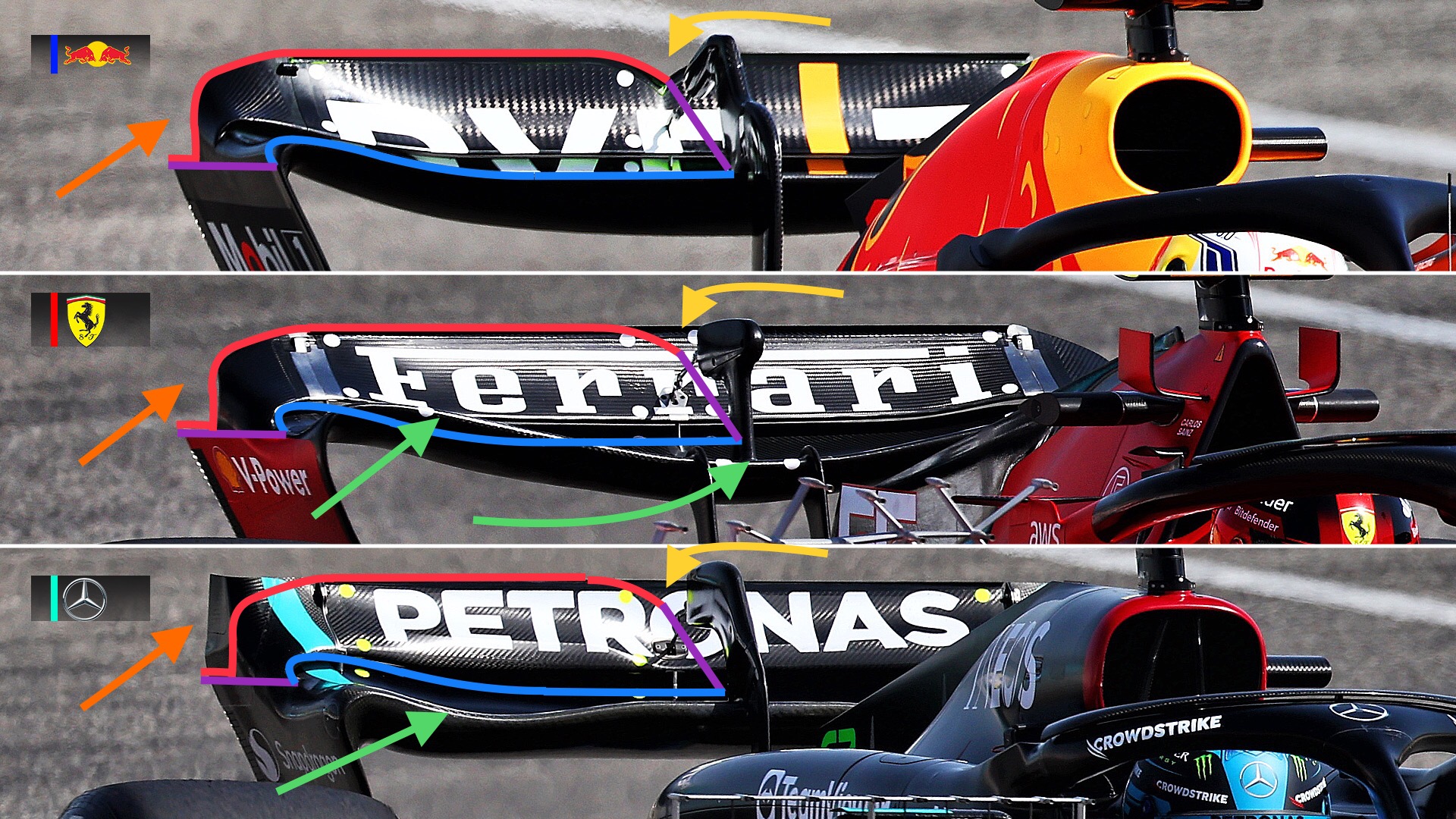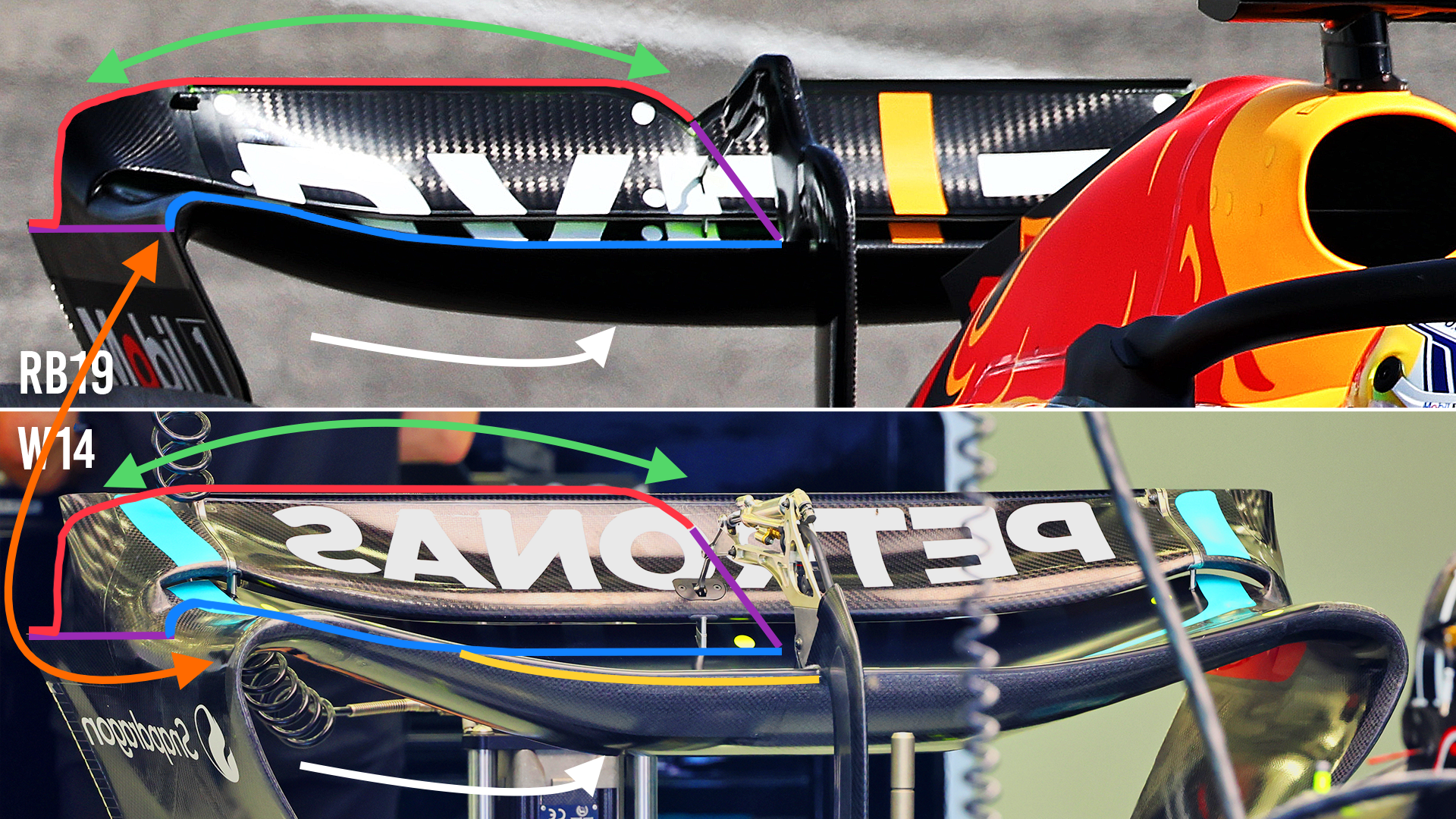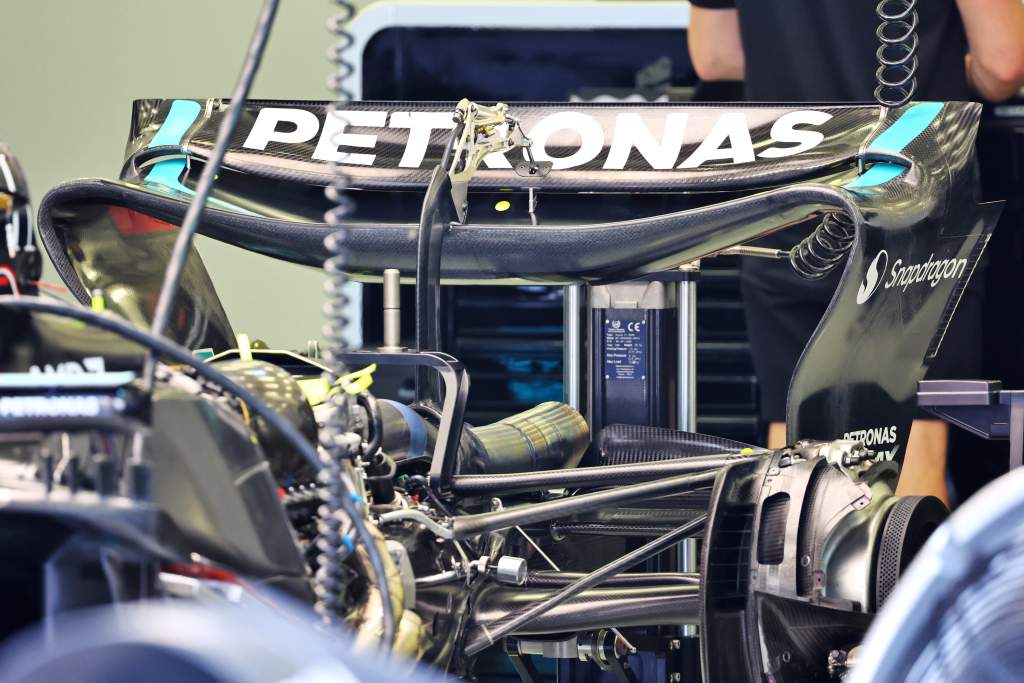Up Next

Mercedes admitted the rear wing it ran during Formula 1’s sole 2023 pre-season test was less than optimal. That’s Mercedes-speak for the fact it didn’t have the planned start-of-2023 rear wing ready in time, which for a top team is something I fail to understand.
We have had well over a year of these regulations and all the teams need a family of wings that step through the different downforce levels that are required for each circuit.
With those steps in downforce will be steps in drag because the two go hand in hand. This defines the efficiency of each rear wing set-up and depending on that efficiency level, the efficiency of the whole car.
Whatever the reasons, Mercedes has brought its new version to Bahrain for the race weekend.
The comparison photos are at a slightly different angle, so I have had a little fiddle to get the best possible fit whilst still giving a true comparison. I have compared it to the Red Bull version that I used in the earlier comparison article from pre-season testing looking at Red Bull, Ferrari and Mercedes (below).

This new version follows the same ‘spoon’ trend of Red Bull and Ferrari, as opposed to the ‘W’ concept it used in testing.
It is still a higher downforce level wing than Red Bull ran in testing. The leading edge separation point (yellow highlight below) of the mainplane shows the extra overall depth of the wing in this area.

It is interesting how Mercedes has changed direction with this as there were plenty of comments in response to my earlier article about why Mercedes used the ‘W’ concept.
Some of them were about the different approach flow created by the lack of sidepods, some were about the different approach flow because of the gutters in the engine cover. All of these were valid to a certain extent as, yes, the approach airflow onto the wing will be affected by what is up ahead of it.
But the biggest influence is as with all cars the rollover bar area and engine cover. Airflow in this area will sweep downwards as the blockage it creates is reduced nearer the back of the car
The diffuser also pulls flow down into the central part of the car, so that is why the leading edge separation point (yellow highlight) is higher relative to the throat (white arrow) of the wing than it is at the sides.
The double-ended orange arrow shows that the outer chord is longer in this area, again giving more wing surface area and, with that, downforce. I am a fan of the larger radius between the mainplane and the endplate, as it reduces the risk of airflow separation in this area of the undersurface.
The double-ended green arrow shows that once again Mercedes doesn’t prioritise the small details like the central chord reduction, which is just behind the combined central wing support and DRS actuator or the radius on the outer corner of the flap’s trailing edge.
It’s a lower downforce, and with that, a lower-drag version than Mercedes ran in testing. Only time will tell if it is a big enough step to allow the team to close up what looked like a significant straightline speed disadvantage.






